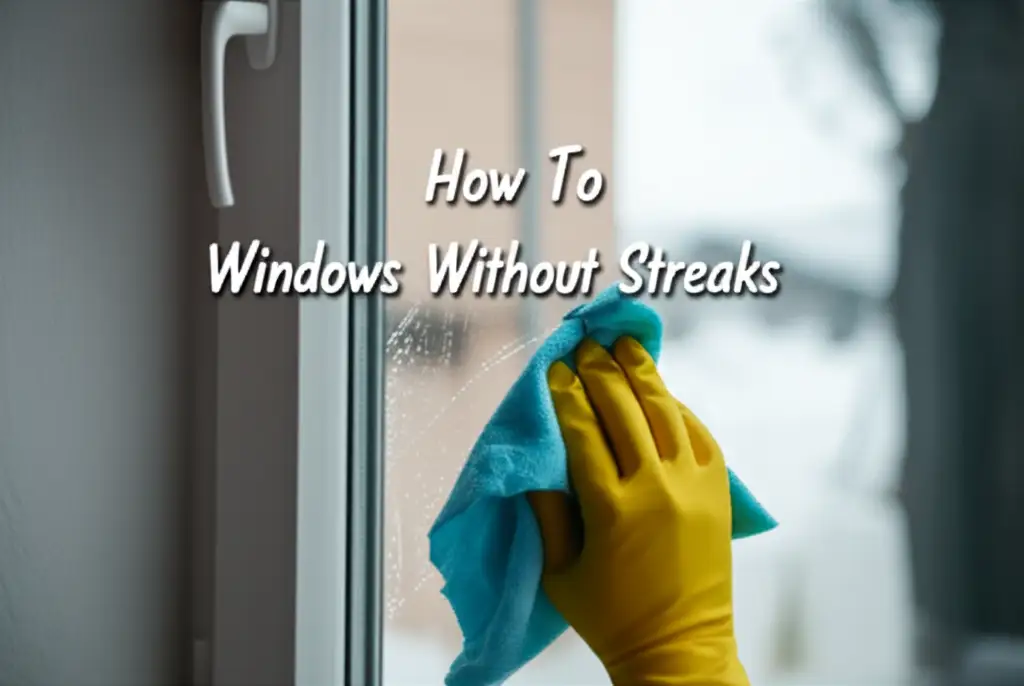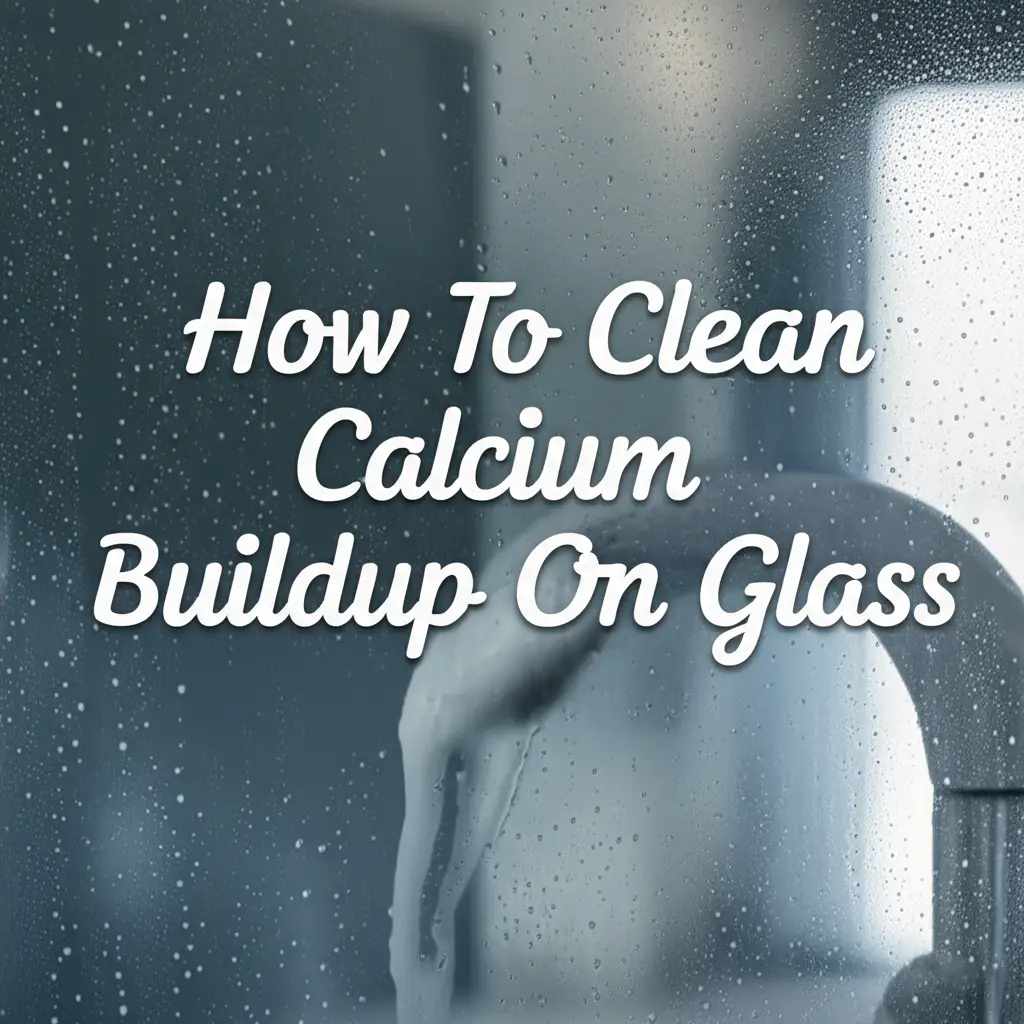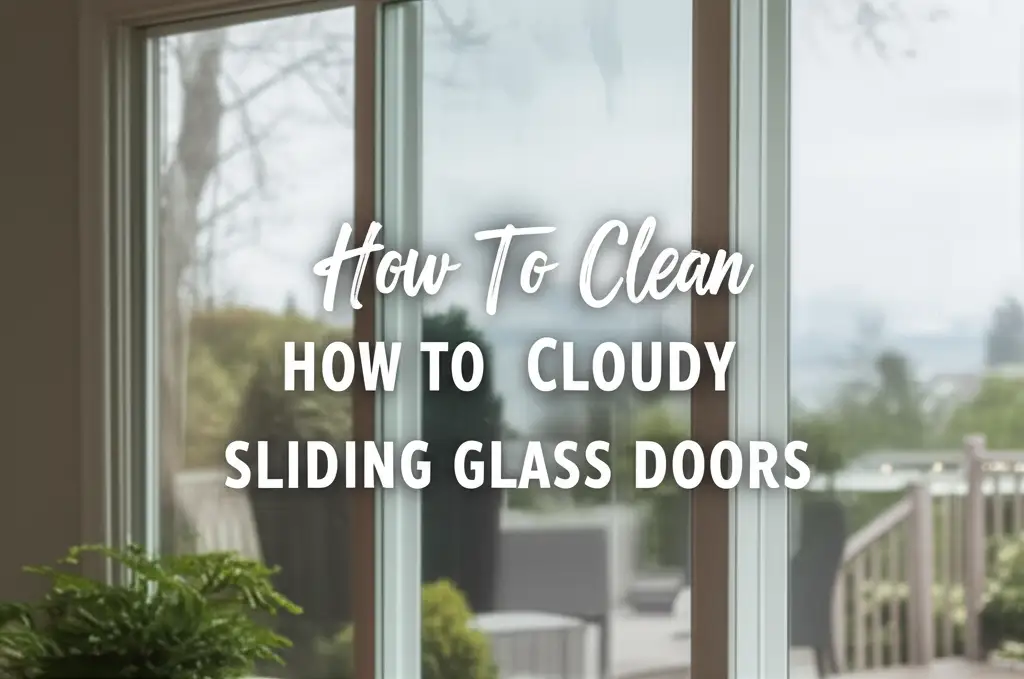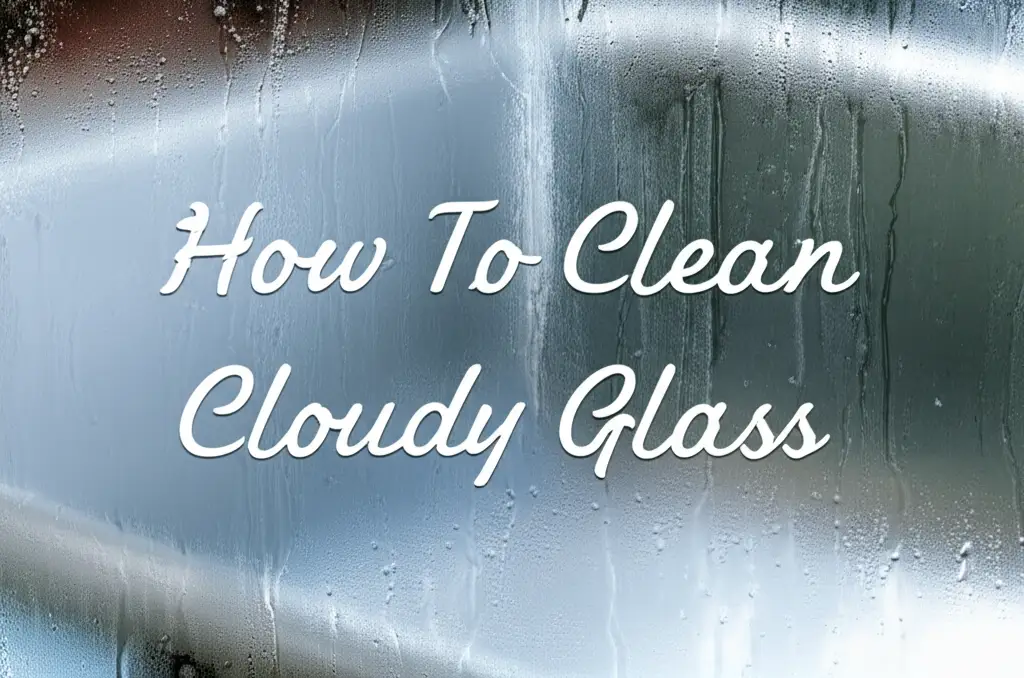· Home Cleaning · 16 min read
How To Clean Glass Without Streaks
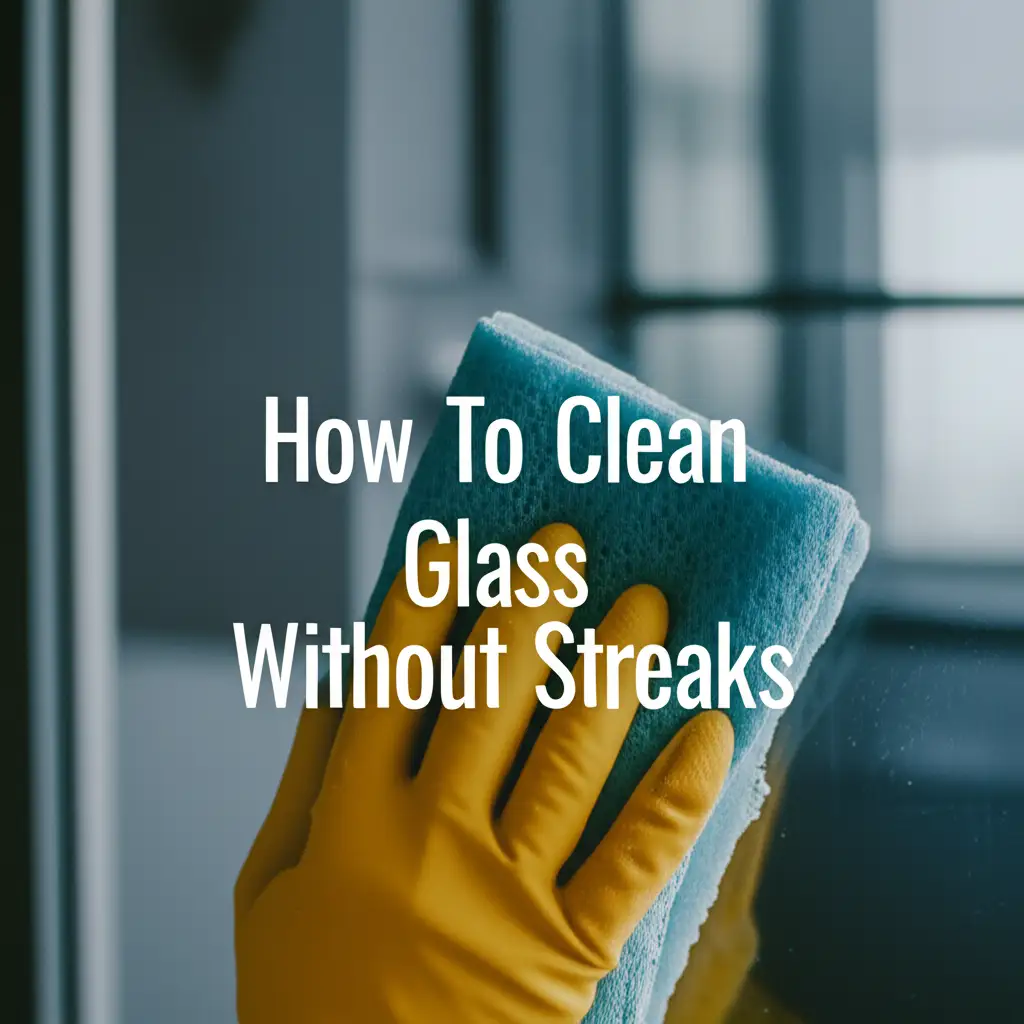
How To Clean Glass Without Streaks: Your Complete Guide
Do you ever clean your windows or mirrors, only to find frustrating streaks staring back at you? It is a common problem, and it can make your glass look dirtier than before you started. Achieving perfectly clear, streak-free glass might seem like a difficult task. But it is entirely possible with the right methods and tools.
I understand this frustration. I have spent years perfecting my approach to cleaning glass surfaces. Many people face the same challenge. This article will show you how to clean glass without streaks. We will explore effective techniques, common mistakes, and simple DIY solutions. By the end, you will have the knowledge to make all your glass surfaces sparkle.
Takeaway
- Choose the Right Tools: Use high-quality microfiber cloths or a squeegee for best results.
- Select Proper Solutions: Use distilled water, vinegar-based cleaners, or rubbing alcohol.
- Clean on Cloudy Days: Avoid direct sunlight to prevent quick drying and streaking.
- Work in Sections: Clean glass in small, manageable areas, from top to bottom.
- Use Proper Technique: Overlap strokes and dry tools frequently.
- Avoid Common Mistakes: Do not use paper towels or too much cleaner.
How do you clean glass without streaks?
You can clean glass without streaks by using specific tools and cleaning solutions. Use distilled water, white vinegar, or rubbing alcohol for your cleaner. Apply it with a clean microfiber cloth or a squeegee. Work in small sections, from top to bottom. Clean on a cloudy day to prevent quick drying. This method ensures a clear finish.
Understanding Why Glass Streaks
Have you ever wondered why glass gets streaks after cleaning? It is more than just dirt. Several factors contribute to those annoying marks. Understanding these causes helps us prevent them. We can then achieve truly clear surfaces.
One main reason for streaks is residue. This residue comes from old cleaning products. It also comes from hard water minerals. Even soap scum can leave a film. This film becomes visible when light hits the glass. Another factor is the cleaning solution itself. Many commercial cleaners leave behind a film. This film attracts dust and creates streaks. Using too much product can also cause this issue.
The type of water you use matters too. Tap water contains minerals like calcium and magnesium. When tap water dries on glass, these minerals are left behind. They appear as spots or streaks. This is especially true for hard water areas. Temperature also plays a role. Cleaning glass in direct sunlight makes the solution dry too quickly. This does not give you time to wipe it clean. The solution then dries unevenly, leaving streaks. I learned this the hard way on a sunny afternoon.
The tools you use are critical. Paper towels can leave lint and smudges. Old, dirty cloths can spread grime instead of removing it. Even a dirty squeegee blade can redistribute dirt. These issues create new streaks. Using the wrong technique, like not overlapping strokes, also contributes to an uneven finish. Knowing these common culprits helps us tackle the problem head-on.
Essential Tools and Materials for Streak-Free Glass
Achieving streak-free glass starts with the right tools. Many people try to clean glass with whatever is handy. This often leads to disappointment. Using specific materials makes a huge difference. I always make sure I have these items before I start.
First, invest in high-quality microfiber cloths. These cloths are lint-free. They are also highly absorbent. They pick up dirt and moisture effectively. Regular towels or paper towels often leave fibers or smudges. Microfiber cloths grab onto particles, leaving a clean surface. You will need at least two: one for applying cleaner and one for drying.
A good squeegee is another valuable tool, especially for larger windows. Choose one with a sharp, high-quality rubber blade. A squeegee allows you to remove the cleaning solution evenly. This prevents streaks from forming. Make sure to keep the blade clean. Wipe it after each pass. I find that a clean squeegee makes the job much faster.
You will also need two buckets. One bucket holds your cleaning solution. The other bucket holds clean water for rinsing your tools. This prevents spreading dirty water. A sturdy sponge or scrub brush can help with stubborn grime. For high windows, an extension pole for your squeegee is very helpful. Having these basic tools ready sets you up for success.
For those challenging glass surfaces, sometimes you need specialized tools. For instance, cleaning a black glass stove top without streaks requires particular care. Similarly, a specific approach works best when you want to clean glass without glass cleaner. Different glass types may benefit from slightly adjusted tools or methods.
The Best Cleaning Solutions for Spotless Glass
The cleaner you use is just as important as your tools. Many commercial glass cleaners work well. However, some contain harsh chemicals or leave a slight film. For a truly streak-free finish, I often turn to simple, natural solutions. These options are effective and cost-efficient.
One of the most popular and effective DIY solutions is white vinegar. Vinegar is acidic. This helps break down mineral deposits, grease, and grime. Mix equal parts white vinegar and distilled water in a spray bottle. Distilled water is crucial because it does not contain minerals. These minerals can cause streaks. This simple mixture can clean most glass surfaces effectively. For a fresh scent, you can add a few drops of essential oil. I often use lemon or peppermint oil.
Rubbing alcohol is another excellent ingredient for streak-free cleaning. It evaporates quickly. This leaves no residue behind. Mix one cup of rubbing alcohol with one cup of distilled water. Add one tablespoon of white vinegar for extra cleaning power. This solution works wonders on mirrors and windows. It is also great for delicate surfaces like a TV screen without streaks or a computer screen without streaks, just remember to spray the cloth, not the screen directly.
For extremely dirty glass, a few drops of dish soap can be added to the vinegar-water mixture. Just a tiny amount is needed. Too much soap will create excessive suds. This makes rinsing difficult and can cause streaks. Always ensure your solution is well-mixed before use. Experiment with these solutions to find what works best for your specific glass types and dirt levels.
Step-by-Step Guide to Cleaning Windows Without Streaks
Cleaning windows can seem like a big job, but with a clear plan, it is simple. I follow a consistent set of steps to ensure my windows are always sparkling. This guide will help you achieve the same results. Take your time, and the effort will pay off.
First, choose the right day. A cloudy, calm day is ideal. Direct sunlight or strong winds can dry your cleaning solution too quickly. This leads to streaks. Begin by preparing your windows. Use a soft brush or vacuum cleaner to remove loose dirt and dust from the frames and sills. This prevents dirt from spreading onto the glass during cleaning.
Next, prepare your cleaning solution. Fill one bucket with your chosen solution, like vinegar and distilled water. Have another bucket with clean, plain water for rinsing your squeegee or cloths. Start at the top of the window. Apply the cleaning solution generously to the glass. Make sure to cover the entire surface. If using a squeegee, wet the blade in your solution.
When using a squeegee, start at the top corner of the window. Pull the squeegee in a straight line across the top. Overlap each stroke by about an inch. Wipe the squeegee blade clean with a dry microfiber cloth after each pass. This removes dirty water and prevents streaks. Continue working your way down the window. Always overlap your strokes slightly to avoid missing spots. If you prefer cloths, use one damp cloth to clean the glass. Then, immediately follow with a clean, dry microfiber cloth to buff the surface. This ensures all moisture is absorbed.
Finally, inspect your work. Stand back and look at the window from different angles. This helps you spot any missed areas or lingering streaks. If you see streaks, re-clean that small area immediately. Use a fresh, dry microfiber cloth to buff it out. Clean the window frames and sills last to catch any drips. This method works very well for general window cleaning. For tougher issues, like how to clean cloudy sliding glass doors, you might need a deeper clean or specialized products before this final buffing step.
Mastering Mirrors and Smaller Glass Surfaces
Cleaning mirrors and smaller glass items needs a slightly different touch. These surfaces are often closer to eye level. This means streaks are even more noticeable. I have developed specific techniques for these areas. They help me achieve perfect clarity every time.
Mirrors, glass tabletops, and shower doors are common culprits for streaks. For mirrors, I usually avoid spraying cleaner directly onto the glass. Instead, I spray the cleaning solution onto a clean microfiber cloth. This prevents the solution from dripping behind the mirror frame. Drips can cause damage over time. It also gives me more control over the application.
When cleaning, start at the top of the mirror. Wipe across in an S-motion or straight horizontal lines. Overlap your strokes slightly. Immediately follow with a second, dry microfiber cloth to buff the surface until it shines. Ensure your cloths are always clean and dry. A single dirty cloth can ruin the entire job. For bathroom mirrors, addressing water spots off glass first is crucial. Hard water can be a real challenge on these surfaces.
For glass tabletops or shelves, remove all items first. Wipe away any loose dust or debris. Then, apply your cleaner to a cloth and wipe the surface. Use a dry cloth to buff. Pay close attention to edges and corners. These areas often collect dust. For glass shower doors, hard water stains are a major problem. You might need a stronger solution, like a paste of baking soda and vinegar. Or use a specialized cleaner for shower glass hard water. After cleaning, a squeegee is highly effective for shower doors. Use it after every shower to prevent future buildup. Always remember to use gentle pressure. This prevents damage to the surface.
DIY Glass Cleaner Recipes for a Natural Shine
Using homemade glass cleaners is a fantastic way to get streak-free results. It saves money and reduces exposure to harsh chemicals. I have tried many recipes over the years. These are my favorites. They consistently deliver a brilliant, natural shine.
My go-to recipe is the simple white vinegar and distilled water solution. Mix equal parts white vinegar and distilled water in a spray bottle. This solution cuts through grime and dissolves mineral deposits. It leaves glass sparkling. The vinegar smell dissipates quickly as it dries. For stove tops, specifically, a similar glass stove top with vinegar approach works wonders.
For an extra boost, especially for stubborn marks, I add rubbing alcohol. Combine one cup of distilled water, one cup of rubbing alcohol, and one tablespoon of white vinegar. Rubbing alcohol helps the solution evaporate faster. This minimizes streaks. It is also excellent for disinfecting. This blend works on various surfaces, including general windows and mirrors.
Another effective recipe includes cornstarch. Mix two cups of distilled water, 1/2 cup of white vinegar, and 1/4 cup of rubbing alcohol. Then, add one tablespoon of cornstarch. Shake well before each use. The cornstarch acts as a mild abrasive. It helps scrub away grime without scratching. It also helps to absorb oils, contributing to a streak-free finish. I find this especially useful for outdoor windows.
Always use distilled water for these recipes. Tap water contains minerals that can cause streaks. Store your homemade cleaner in a clearly labeled spray bottle. Shake it well before each use to ensure ingredients are mixed. These DIY solutions are proof that you do not need expensive products for clean glass.
Common Mistakes to Avoid When Cleaning Glass
Even with the right tools and solutions, mistakes can lead to streaks. I have made many of these errors myself over the years. Learning to avoid them is key to truly clear glass. Pay attention to these common pitfalls.
First, never clean glass in direct sunlight. The sun heats the glass. This causes your cleaning solution to evaporate too quickly. The solution dries before you can wipe it away. This leaves behind a film or streaks. Always choose a cloudy day or clean the shaded side of your house. This gives you enough time to work properly.
Using too much cleaning solution is another common mistake. More is not always better. Excessive cleaner leaves residue on the glass. This residue becomes visible as streaks. Use a moderate amount. Ensure you can easily wipe it all away. If you see too many suds, you are likely using too much.
Paper towels are often used for convenience. However, they are a major cause of streaks and lint. Paper towels break down when wet. They leave behind tiny fibers on the glass. These fibers catch the light and look like streaks. Always use high-quality microfiber cloths or cotton cloths that are lint-free. If you deal with specific issues like removing wax off glass, special attention might be needed beyond standard paper towels.
Using dirty cloths or a dirty squeegee blade will only spread dirt around. This creates new streaks. Always start with clean cloths. Wipe your squeegee blade after every pass. Regularly wash your microfiber cloths. This ensures they are always ready for streak-free cleaning. Neglecting these details wastes your effort.
Finally, not cleaning the frames and sills first can lead to problems. Dirt from these areas can drip onto your freshly cleaned glass. Always clean the frames and sills before you tackle the glass itself. Avoiding these simple mistakes makes a big difference in the final result.
Advanced Tips for Challenging Glass Cleaning Scenarios
Sometimes, cleaning glass is more than just wiping away dust. Stubborn issues like hard water stains, paint, or adhesive can make the job much harder. I have encountered many challenging scenarios. These advanced tips help tackle those tough problems.
Hard water stains are a frequent headache, especially on shower doors and outdoor windows. These are mineral deposits. They leave a cloudy film. For severe hard water stains, create a paste with baking soda and a little white vinegar or lemon juice. Apply the paste to the affected area. Let it sit for 10-15 minutes. Then, scrub with a non-scratch pad. Rinse thoroughly with distilled water. Finish with your regular glass cleaner. If the buildup is significant, dedicated products for hard water stains on shower glass are very effective. Similarly, for calcium buildup on glass, a stronger acid, like muriatic acid (used with extreme caution and protective gear), might be needed in severe cases, but vinegar is usually enough for most.
Removing adhesive residue, like from stickers or tape, requires a different approach. For sticker residue off glass or tape residue off glass, start by gently scraping off as much as possible with a plastic scraper or old credit card. Then, apply a small amount of rubbing alcohol, nail polish remover (acetone), or even peanut butter to the residue. Let it sit for a few minutes. The solvents help dissolve the stickiness. Wipe away with a clean cloth. Then, clean the area with your usual glass cleaner. Always test a small, inconspicuous area first.
Paint splatter on glass can be removed with a razor blade scraper. Hold the blade at a shallow angle to the glass. Carefully push the blade under the paint. This should lift it off without scratching. Always use a new, sharp blade. Be extremely careful not to scratch the glass. Then, clean the area with glass cleaner. For burnt-on water marks or food spills, such as burnt water off glass stove top, a specialized ceramic stove top cleaner and scraper kit is often the most effective solution. These tools and techniques handle the most difficult glass cleaning jobs.
FAQ Section
Can I use newspaper to clean glass?
Using newspaper for cleaning glass is a popular traditional method. It can be effective because newspaper is lint-free and absorbent. However, modern newspaper inks can sometimes transfer to the glass, leaving smudges or stains. It also tends to fall apart when wet. I recommend using high-quality microfiber cloths instead for consistent, streak-free results without any risk of ink transfer.
Why do my windows still streak after cleaning?
Windows often streak because of residue from cleaning products or hard water minerals. Cleaning in direct sunlight also causes streaks. The solution dries too fast. Using dirty cloths or paper towels also leaves lint and smudges. Ensure you use distilled water, clean microfiber cloths, and avoid cleaning in direct sun.
What is the best time of day to clean glass?
The best time of day to clean glass is on a cloudy day. If it is sunny, choose early morning or late afternoon. This avoids direct sunlight. Direct sun causes cleaning solutions to dry too quickly. It leaves streaks before you can wipe them away. A calm, overcast day provides ideal conditions for streak-free drying.
How often should I clean my glass?
The frequency of glass cleaning depends on its location and exposure to dirt. I recommend cleaning indoor glass, like mirrors, every 1-2 weeks. Outdoor windows might need cleaning every 1-3 months. Areas with heavy traffic or exposure to elements may need more frequent cleaning. Regular maintenance helps prevent stubborn buildup.
Can I use dish soap to clean glass?
You can use a tiny amount of dish soap to clean very dirty glass. Add just a few drops to a bucket of water. Too much dish soap creates excessive suds. This makes rinsing difficult. It leaves a film that causes streaks. If using dish soap, ensure thorough rinsing with clean water afterward to prevent residue.
What about hard water spots on glass?
Hard water spots are mineral deposits that etch onto glass. For these, a white vinegar solution is effective. For stubborn spots, make a paste of baking soda and vinegar. Apply it, let it sit, then scrub and rinse. Dedicated hard water removers are also available. Regular cleaning prevents severe buildup.
Conclusion
Achieving perfectly streak-free glass does not have to be a frustrating chore. As we have seen, the secret lies in understanding the causes of streaks and applying the right techniques. From selecting the proper tools like high-quality microfiber cloths and squeegees to choosing effective cleaning solutions, every step plays a role. I always tell people that patience and consistency are your best friends in this process.
Remember to avoid common mistakes. Do not clean in direct sunlight. Do not use paper towels. Do not use too much cleaner. These simple adjustments can dramatically improve your results. Whether you are tackling large windows, delicate mirrors, or challenging hard water stains, the methods discussed here provide a clear path. You now have the knowledge to make all your glass surfaces sparkle. Get ready to enjoy the clear views and brilliant reflections. Your efforts will pay off with truly spotless glass. Make your home shine today.
- glass cleaning
- streak-free windows
- DIY cleaner
- home cleaning tips
- window washing
- mirror cleaning
- hard water stains

